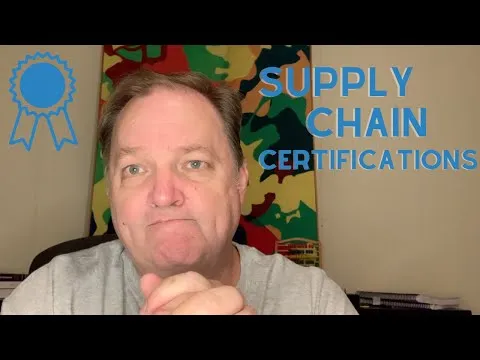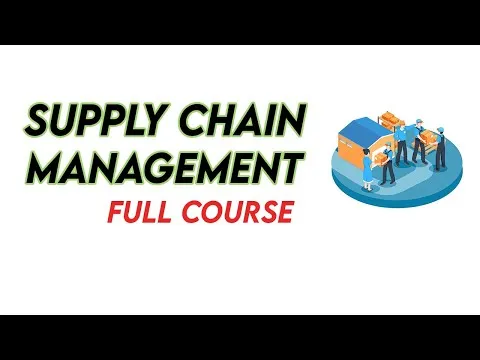
Strategic Sourcing 
This course will provide an in-depth look at the seven-step Strategic Sourcing Process, including profiling categories, developing a sourcing strategy, selecting suppliers, negotiating, implementing, and managing supplier relationships. ▼
ADVERTISEMENT
Course Feature
![]() Cost:
Cost:
Free
![]() Provider:
Provider:
Coursera
![]() Certificate:
Certificate:
Paid Certification
![]() Language:
Language:
English
![]() Start Date:
Start Date:
3rd Jul, 2023
Course Overview
❗The content presented here is sourced directly from Coursera platform. For comprehensive course details, including enrollment information, simply click on the 'Go to class' link on our website.
Updated in [March 06th, 2023]
This course, Strategic Sourcing, provides an in-depth overview of the seven-step process of Strategic Sourcing. The seven steps are: Profile the Category, Develop a Category Sourcing Strategy, Generate Supplier Profile, Choose Competitive Selection or Supplier Development, Select Supplier(s) and Negotiate, Implement, and Continuous Improvement/Supplier Relationship Management.
The course will be supported by videos, readings, and a required case with peer review. Through the course, students will gain an understanding of the Strategic Sourcing Process and how to apply it in a business setting.
The Profile the Category step will cover the basics of the Strategic Sourcing Process, including the definition of Strategic Sourcing, the purpose of the process, and the benefits of Strategic Sourcing. Students will learn how to identify the category of goods or services to be sourced, and how to assess the current state of the category.
The Develop a Category Sourcing Strategy step will cover the development of a sourcing strategy for the category. Students will learn how to develop a sourcing strategy that is tailored to the category and the organization’s needs.
The Generate Supplier Profile step will cover the process of identifying potential suppliers and assessing their capabilities. Students will learn how to identify potential suppliers and assess their capabilities in order to determine which suppliers are best suited for the category.
The Choose Competitive Selection or Supplier Development step will cover the process of selecting the best supplier for the category. Students will learn how to select the best supplier for the category based on the criteria established in the sourcing strategy.
The Select Supplier(s) and Negotiate step will cover the process of negotiating with suppliers. Students will learn how to negotiate with suppliers in order to obtain the best terms and conditions for the category.
The Implement step will cover the process of implementing the sourcing strategy. Students will learn how to implement the sourcing strategy in order to ensure that the desired results are achieved.
The Continuous Improvement/Supplier Relationship Management step will cover the process of managing the supplier relationship. Students will learn how to manage the supplier relationship in order to ensure that the desired results are achieved.
At the end of the course, students will have a comprehensive understanding of the Strategic Sourcing Process and how to apply it in a business setting. They will be able to identify the category of goods or services to be sourced, develop a sourcing strategy, identify potential suppliers, select the best supplier, negotiate with suppliers, implement the sourcing strategy, and manage the supplier relationship.
[Applications]
Upon completion of this course, participants will be able to apply the Strategic Sourcing Process to their own organization. They will be able to develop a sourcing strategy, generate supplier profiles, select suppliers, and negotiate and implement contracts. Additionally, they will be able to develop a continuous improvement and supplier relationship management plan.
[Career Paths]
1. Strategic Sourcing Manager: Strategic Sourcing Managers are responsible for developing and executing sourcing strategies to ensure that their organization is getting the best value for their products and services. They are responsible for researching and analyzing market trends, negotiating contracts, and managing supplier relationships. As the demand for cost-effective and efficient sourcing strategies increases, the need for Strategic Sourcing Managers is expected to grow.
2. Procurement Analyst: Procurement Analysts are responsible for researching and analyzing market trends, negotiating contracts, and managing supplier relationships. They are also responsible for developing and executing sourcing strategies to ensure that their organization is getting the best value for their products and services. With the increasing demand for cost-effective and efficient sourcing strategies, the need for Procurement Analysts is expected to grow.
3. Supply Chain Manager: Supply Chain Managers are responsible for managing the flow of goods and services from suppliers to customers. They are responsible for developing and executing sourcing strategies to ensure that their organization is getting the best value for their products and services. As the demand for cost-effective and efficient supply chain management increases, the need for Supply Chain Managers is expected to grow.
4. Category Manager: Category Managers are responsible for developing and executing sourcing strategies to ensure that their organization is getting the best value for their products and services. They are responsible for researching and analyzing market trends, negotiating contracts, and managing supplier relationships. With the increasing demand for cost-effective and efficient sourcing strategies, the need for Category Managers is expected to grow.
[Education Paths]
1. Bachelor of Science in Supply Chain Management: This degree program focuses on the management of the entire supply chain, from the procurement of raw materials to the delivery of finished products. It covers topics such as logistics, inventory management, and global sourcing. Students will learn how to develop and implement strategies to optimize the supply chain and reduce costs. This degree is becoming increasingly popular as businesses look to streamline their operations and become more competitive.
2. Master of Business Administration in Supply Chain Management: This degree program provides a comprehensive overview of the supply chain, from procurement to delivery. Students will learn how to develop and implement strategies to optimize the supply chain and reduce costs. They will also gain an understanding of the global supply chain and how to manage it effectively. This degree is becoming increasingly popular as businesses look to become more competitive and efficient.
3. Master of Science in Logistics and Supply Chain Management: This degree program focuses on the management of the entire supply chain, from the procurement of raw materials to the delivery of finished products. It covers topics such as logistics, inventory management, and global sourcing. Students will learn how to develop and implement strategies to optimize the supply chain and reduce costs. This degree is becoming increasingly popular as businesses look to streamline their operations and become more competitive.
4. Doctor of Business Administration in Supply Chain Management: This degree program provides a comprehensive overview of the supply chain, from procurement to delivery. Students will learn how to develop and implement strategies to optimize the supply chain and reduce costs. They will also gain an understanding of the global supply chain and how to manage it effectively. This degree is becoming increasingly popular as businesses look to become more competitive and efficient.
Pros & Cons

Interesting topic

Straight to the point

Comprehensive course

Good explanations

Professional development

Strategic Sourcing Process

Peer reviewed by three random people

Low pass rate

No standard textbooks

Need help with assignment
Course Provider

Provider Coursera's Stats at AZClass
Discussion and Reviews
0.0 (Based on 0 reviews)
Explore Similar Online Courses

Music Theory 101

Introduction to TCP&IP

Python for Informatics: Exploring Information

Social Network Analysis

Introduction to Systematic Review and Meta-Analysis

The Analytics Edge

DCO042 - Python For Informatics

Causal Diagrams: Draw Your Assumptions Before Your Conclusions

Whole genome sequencing of bacterial genomes - tools and applications

MIT Free Supply Chain Management Courses

What Are Good Supply Chain Certifications?

Supply Chain Management (Full Course) SCM Lecture
 Related Categories
Related Categories
 Popular Providers
Popular Providers
Quiz
 Submitted Sucessfully
Submitted Sucessfully
1. What is the first step in the Strategic Sourcing Process?
2. What is the last step in the Strategic Sourcing Process?
3. What type of learning materials are used in this course?
4. What is the 7 step process of Strategic Sourcing?
Correct Answer: Profile the Category, Develop a Category Sourcing Strategy, Generate Supplier Profile, Choose Competitive Selection or Supplier Development, Select Supplier(s) and Negotiate, Implement, Continuous Improvement/Supplier Relationship Management


Start your review of Strategic Sourcing